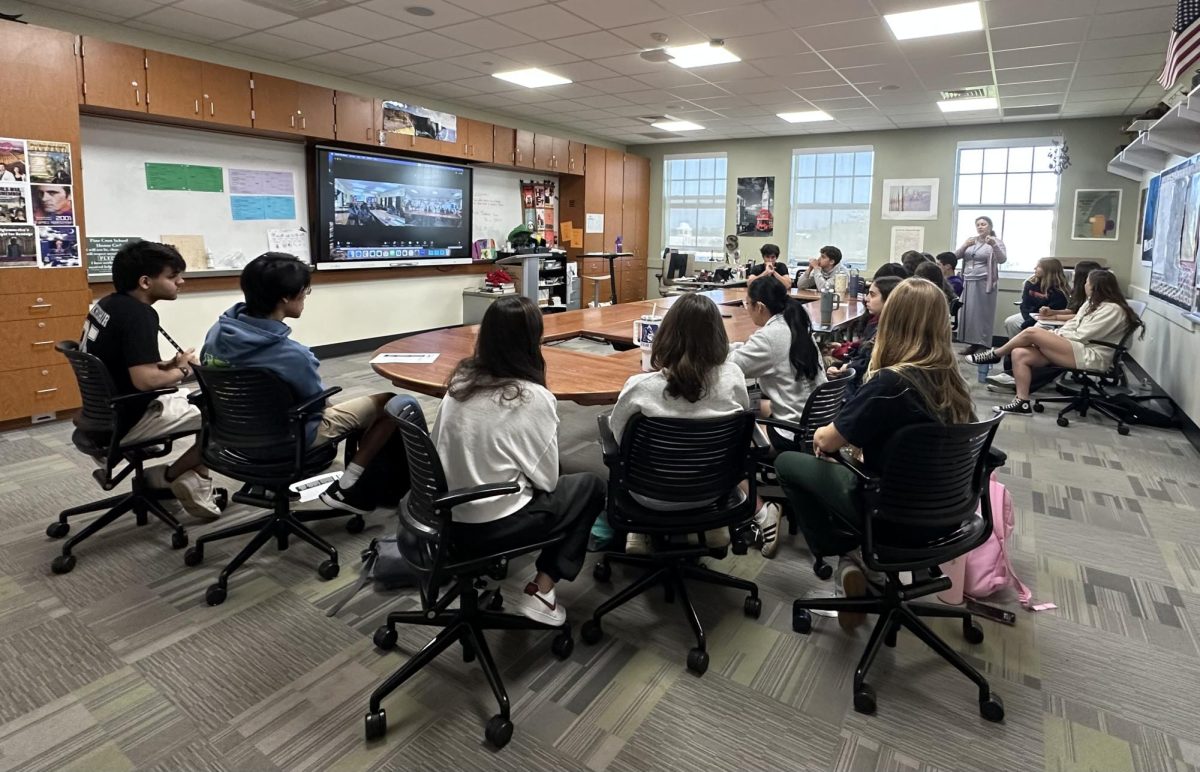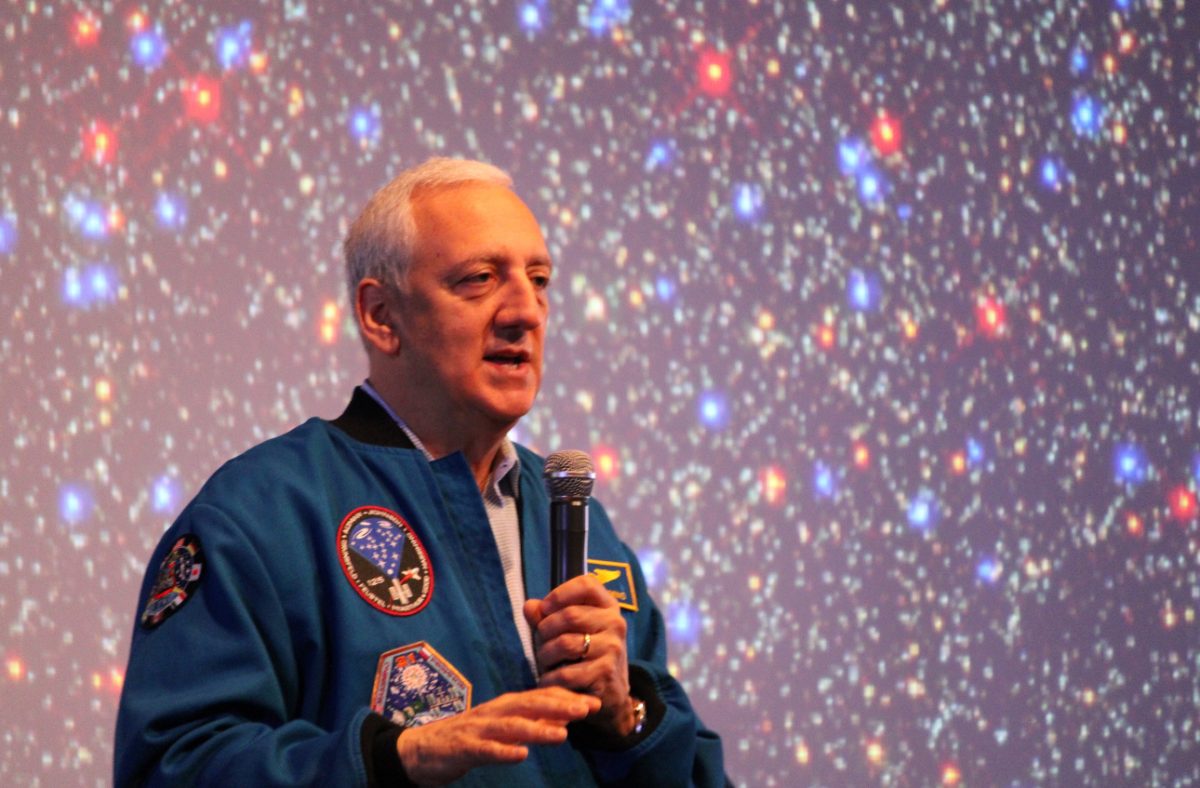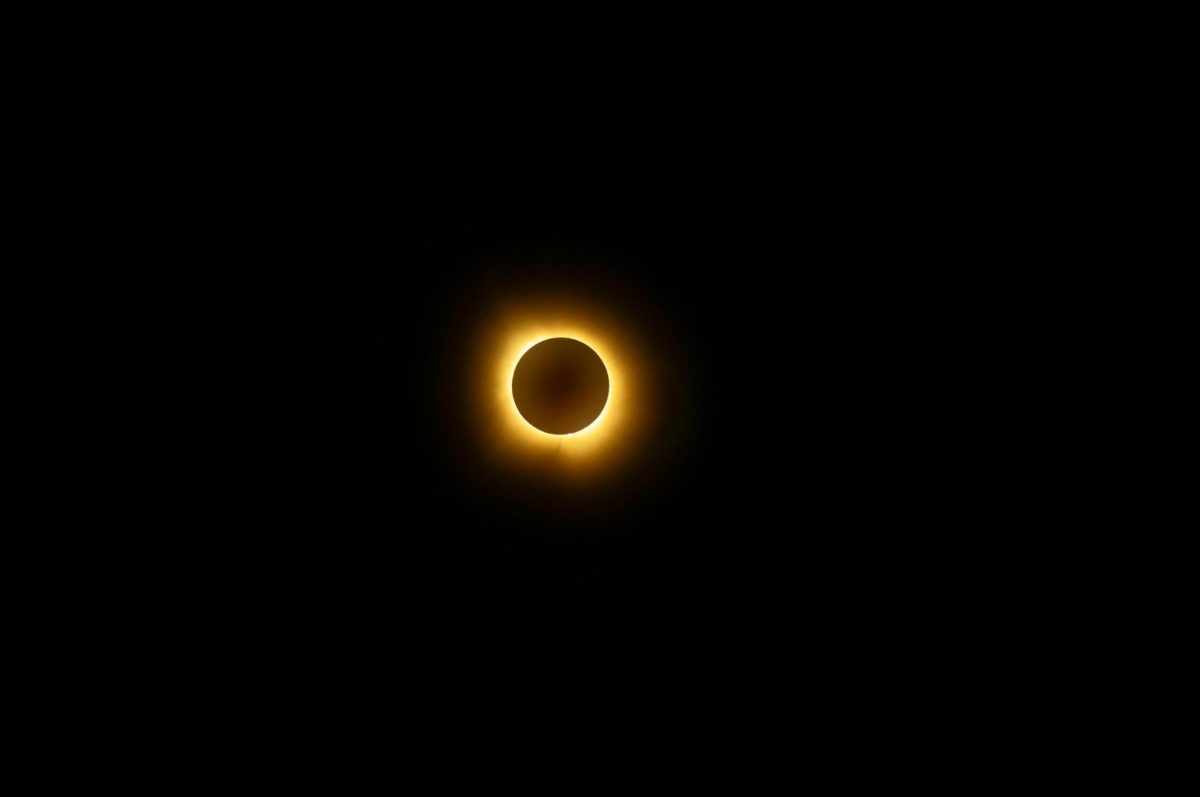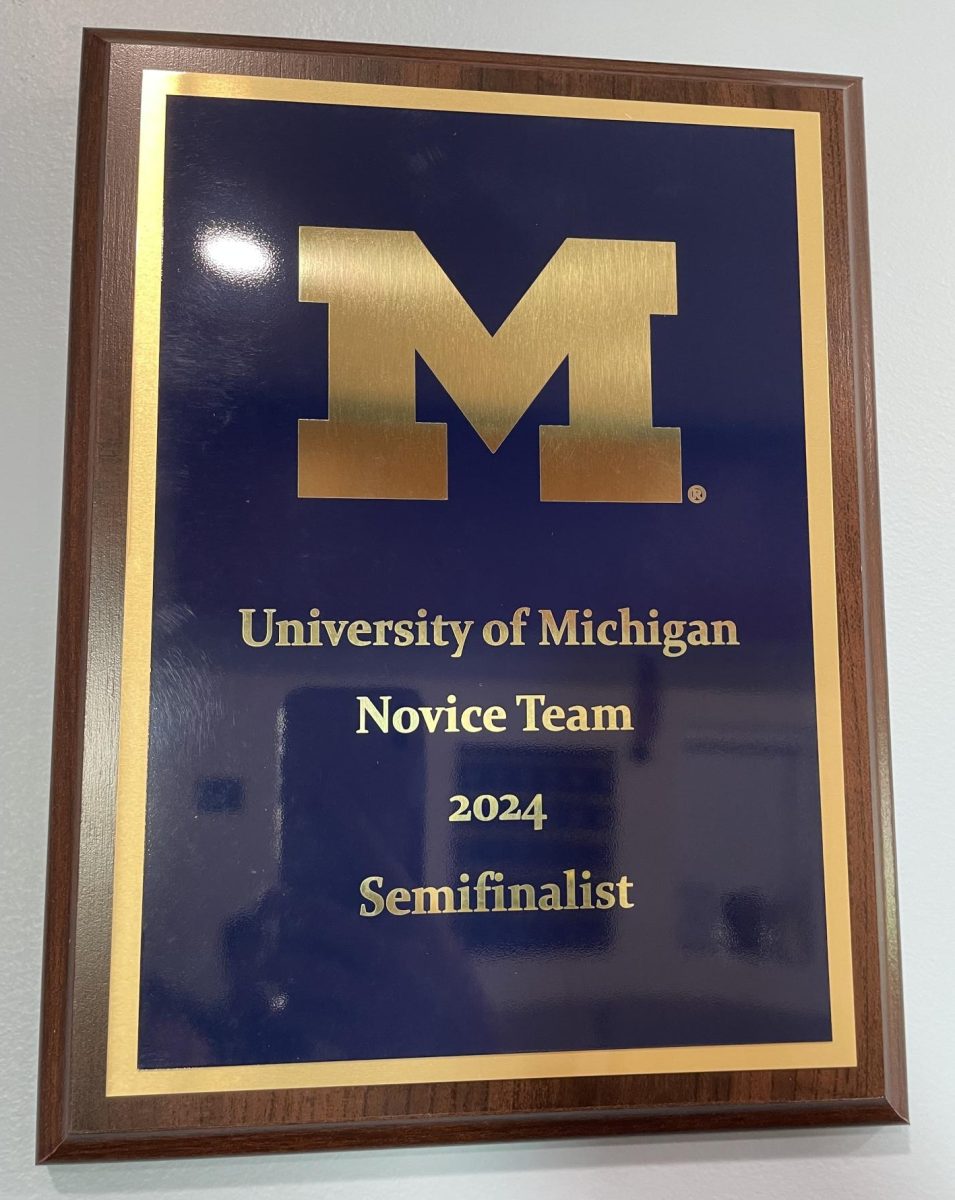A solar eclipse occurred on Monday, April 8th, causing the moon to block out the sun, thrusting many across the world into darkness. Made possible through one cosmic coincidence, a solar eclipse is truly a unique phenomenon. The moon, roughly 400 times smaller than the sun, aligns perfectly with the sun during a total eclipse, appearing 400 times closer. Different types of solar eclipses occur based on the viewing angle. For example, a total solar eclipse is directly under the moon, so it blocks nearly all of the sun’s light. A partial eclipse is when only a part of the sun’s light is blocked, and it occurs further away from the moon.
At Pine Crest, students were able to view the eclipse, which peaked around 3:00 PM in Southern Florida. Additionally, solar eclipse glasses were dispersed and a telescope was set up in front of the Huizenga Family Science Center for students and faculty. Maya Sullivan ‘27 said, “The solar eclipse is certainly something worth taking the time out of your day to experience the next time one happens.”
Solar eclipses are truly once-in-a-lifetime moments. The next eclipse to pass over the U.S. will occur in 2044, and the next to pass over Florida will happen in 2045.
































![Stranger Things 4: What to Expect [Warning: Contains Spoilers]](https://pcpawprint.com/wp-content/uploads/2021/11/StrangerThings4-900x473.jpeg)


























































